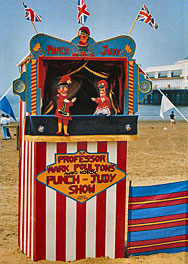Punch and Judy Theater
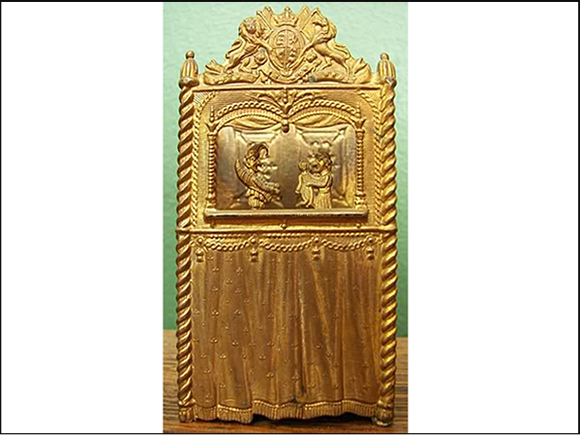
Needle Case (from an Internet website that no longer exists)
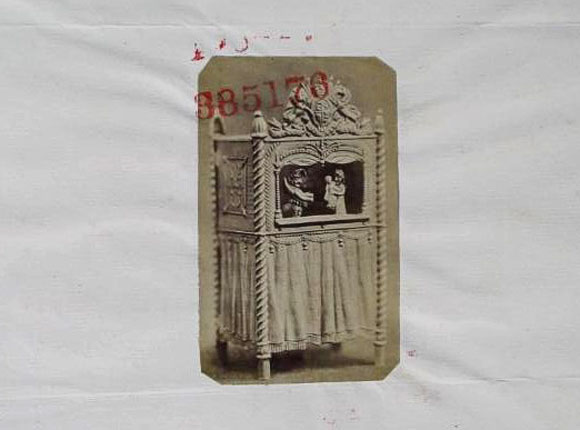
Design Representation
Design Details
Needle Case Type: |
Figural |
Patent/Registered to: |
W. Avery & Son - Redditch |
Patent/Design Representation #: |
Ornamental Class1: Metal: #385176 |
Patent/Design Registration Date: |
August 22, 1882 |
Location of Patent/Design Registration: |
The National Archives (TNA) - Kew, UK |
Reference #: |
TNA Representation - BT 43/52/385176
TNA Register - BT 44/5/385176 |
Dimensions: |
8 height |
Material: |
Brass |
Name Variations: |
W. Avery & Son - Redditch |
Other Variations: |
None |
Additional Photographs
None available
Facts
A Punch and Judy performance is an iconic British puppet show that is executed by a single puppeteer inside a booth. An assistant on
the outside entices passersby to stop and see the show and sells tickets. Historically each performance consisted of a series of short
violent scenes including one where Judy arrives and leaves their baby with Punch who proceeds to drop the child or toss it into the
audience. When Judy returns she is outraged, so Punch whacks her with his stick. In another scene a policeman arrives to investigate
and Punch uses his stick to beat him as well.
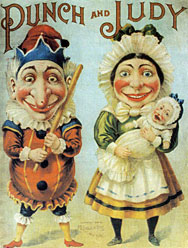
History
The Punch and Judy show is loosely based on the 16th century Italian comedy character named Pulcinella which was anglicized to
Punchinello. The first performance in Britain with marionettes (puppets on strings) dates to 1662 in Covent Garden in London.
However since marionette productions were expensive, difficult to set up and cumbersome to move, by the late 18th century they had given
way to gloved-puppet shows performed in a lightweight booth. During the Victorian Era this booth became more elaborate and Punch and
Judy were very popular at seaside resorts.
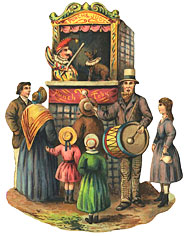
Miscellaneous
Punch and Judy shows, like the one seen below, are still found in many areas of Britain today, however, they have adapted to current social
norms. For example Punch is no longer quite as violent, Judy has much more say and the child is neither dropped nor tossed. However,
their popularity has declined since most people prefer to travel overseas rather than visit the seaside resorts where they were a popular
tradition in Victorian times. Although some areas have attempted to ban these performances due to their violent nature, they have been
unsuccessful because people still enjoy seeing them.
